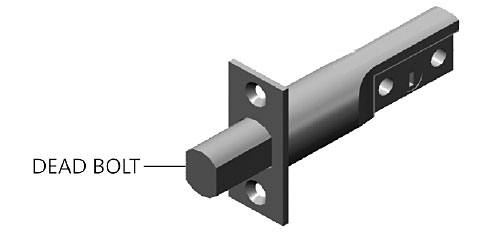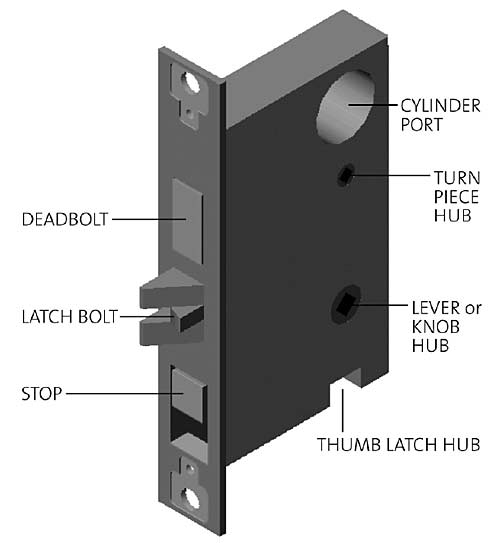Door Hardware Comes of Age
Escutcheon
Back plate that attaches to the door.
Handle
The portion of the set you grab to pull or rotate. The handle options are grips, levers, knobs or ring pulls.
Swing Cover
The flap that covers the cylinder or the emergency release access.
Thumb Piece
This piece retracts the latch bolt on a thumb latch entry lock set.
Turn Piece
This piece operates the dead bolt on the interior side of a locking set.
LOCK MECHANISMS:are the portion of the set operated by the handles, cylinders, thumb latches and turn pieces:
|
|
|
Multi-Point Lock Mechanisms
Mechanisms that latch the door at several points along the length of the door instead of a single point in close proximity to the handle. Multi-point locks are provided with the French doors made by most of the major window manufacturers. Due to the variety of multi-point sets available, it is recommended that a copy of the existing lock trim or a factory drawing be available so the trim can be machined correctly to match the lock in the door.












